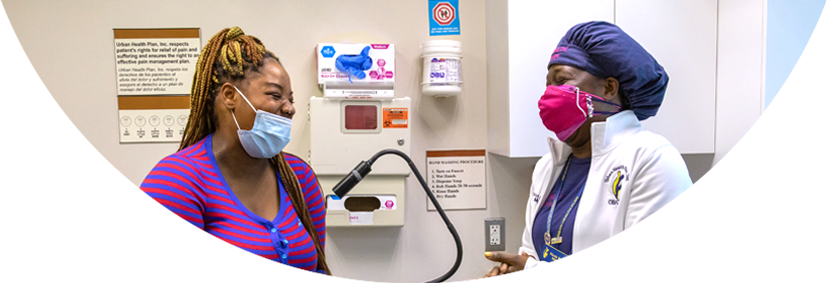Affordable Health Care for All
Since the nation’s first health Community Health Centers opened in 1965, expansion of the federally supported health center system to over 1,400 organizations has created an affordable health care option for 31.5 million people. Health centers in every state, U.S. territory, and the District of Columbia, provide care to all patients, regardless of ability to pay.
Health centers help increase access to crucial primary care by reducing barriers such as cost, lack of insurance, distance, and language for their patients. In doing so, health centers — also called Federally Qualified Health Centers (FQHCs) — provide substantial benefits to the country and its health care system.
America’s Health Centers are Drivers of Health Equity
Since their inception in the 1960s, Community Health Centers have understood that where we live, work, worship and play affects our health, also known as the social drivers of health. Health centers are experts at reaching beyond the clinic walls to address the barriers to health and well-being their patients face.
Health centers have their roots in the Civil Rights Movement. The visionary community activists and reform-minded physicians who founded the earliest health centers believed that we could fight poverty and empower communities with health and opportunity. Today health equity remains a top priority for our country.
- Health centers improve the health and well-being of underserved communities while empowering people to become actively involved in solving issues unique to their needs and communities.
- Health centers are innovators, healers and problem solvers that reach beyond the walls of the conventional health care delivery system to prevent illness and address the social drivers that may cause poor health – diet, nutrition, mental illness, or homelessness.
- The health center mission to promote health equity has become increasingly important in the fight against COVID-19 and other preventable diseases.
- Health centers have been vital in protecting marginalized communities from COVID-19 —including communities of color and special populations .
- Health centers work in partnership with health care payers, entire health care systems, the private sector, and the government on all levels to address and respond to the critical public health crises of our time, including:
- Pandemics
- Natural disasters and extreme weather events
- The national opioid crisis
- Maternal mortality and more
- By mission and by law, health centers offer enabling services to assist patients with specific barriers to care, including:
- Transportation
- Translation
- Food security
- Accessing other social services
- Studies show the quality care health centers deliver is as good or even better than what patients may experience visiting a private practice, yet the range of services found under one roof is also affordable.
- Health center are partners in rebuilding the economy. Health centers produce over $85 billion in economic output in the communities where they operate.
- Health centers employ well over 300,000 (270,000 full time employees) including many of our nation’s veterans.






